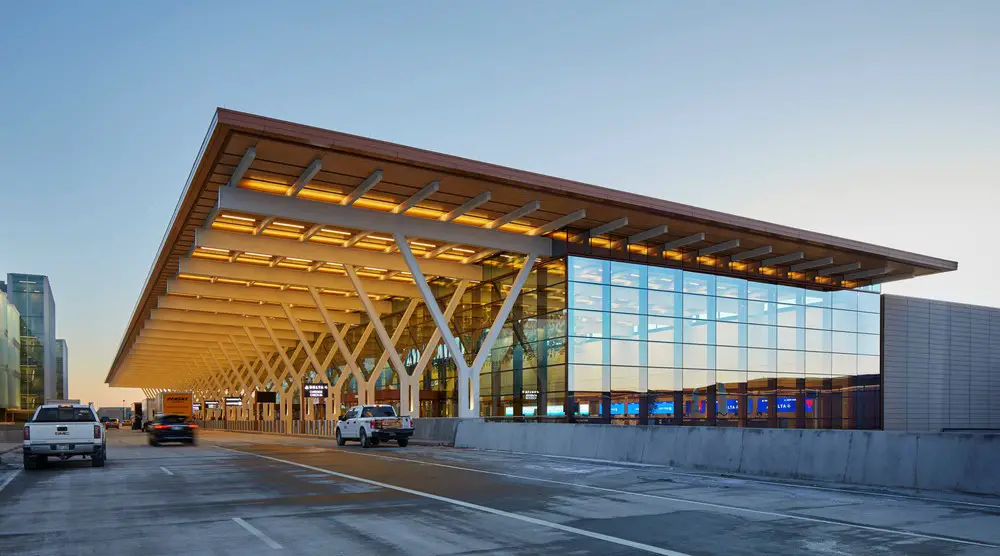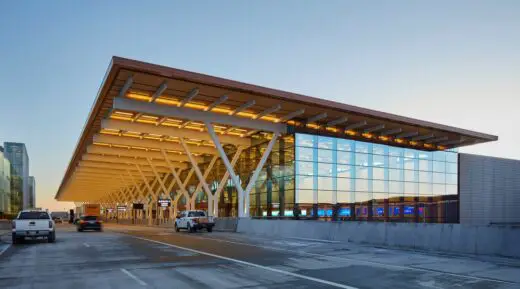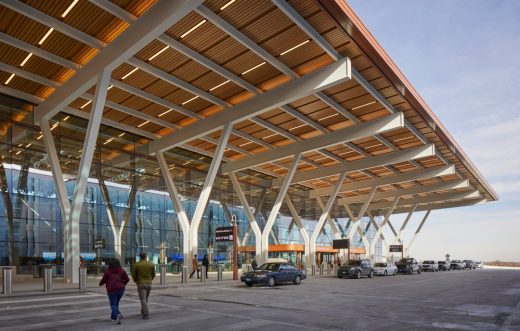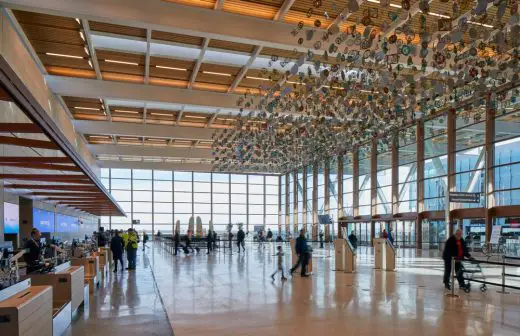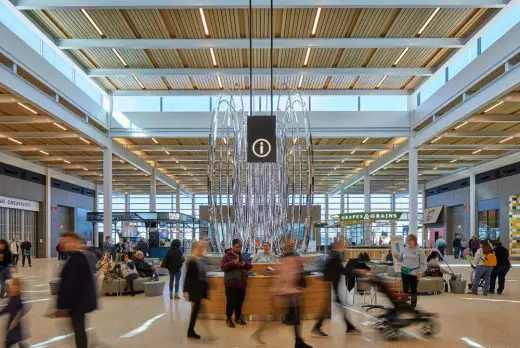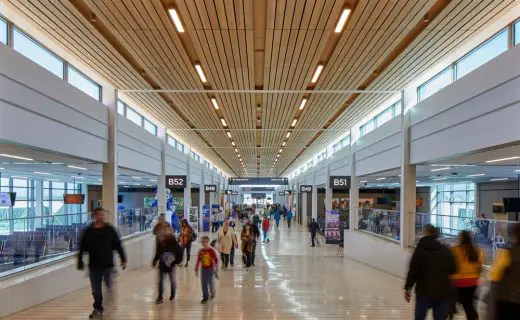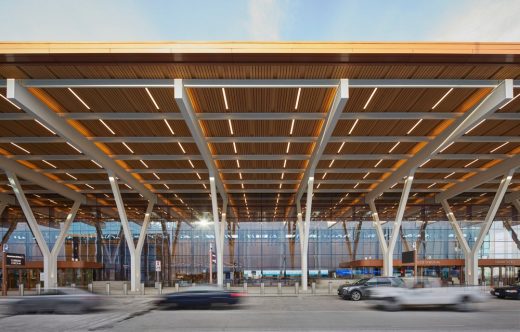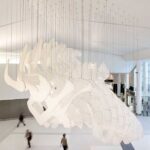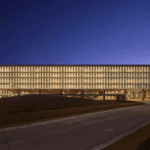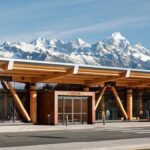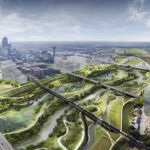Kansas City International Airport, Missouri Air Terminal Building, USA Architecture Development
Kansas City International Airport in Missouri
Feb 28, 2023
Architects: Skidmore, Owings & Merrill (SOM)
Location: Kansas City, Missouri, USA
Photos by Lucas Blair Simpson © SOM
Kansas City International Airport, USA
Kansas City International Airport is to date the largest single infrastructure project in the history of Kansas City, the new LEED Gold terminal significantly increases passenger capacity with a design deeply informed by residents throughout the city.
Skidmore, Owings & Merrill (SOM) is joining the Kansas City Aviation Department, the City of Kansas City, Missouri, developer Edgemoor Infrastructure & Real Estate, and design-builder Clark | Weitz | Clarkson (CWC) for the opening of the new terminal at Kansas City International Airport (KCI). The redevelopment replaces the existing, overcrowded terminals—originally built in 1972—with a single, highly sustainable building that increases annual passenger capacity from 3.8 million to more than 16 million. Transforming the travel experience, the 1.1-million-square-foot terminal embodies the region’s rich culture, while elevating the airport into a place that is inclusive and accessible to all.
“The new terminal is a testament to the strength of the Kansas City region’s demand for travel,” said Pat Klein, Kansas City Director of Aviation. “SOM has designed KCI to be one of the most striking civic destinations in our city, and one of the most inclusive terminals in the world.”
The new terminal—designed, planned, and engineered by SOM with CWC and a team of consultants largely led by women—brings KCI far into the future. The building consolidates all airline operations under one roof, with a 6,000-space parking garage designed by BNIM just steps away, to create a seamless journey for arrivals and departures alike. The building’s 39 gates are used for domestic and international travel, and its layout enables the facility to expand by another 11 gates in the future.
“One of our main goals was to make circulation throughout the terminal an effortless experience,” said SOM Design Partner Colin Koop. “We designed an intuitive layout for the building—one that will make the terminal easy to navigate and walk through, while retaining the flexibility to adapt as air travel changes over time.”
The I-shaped building encompasses two levels: the upper for departing passengers and the lower for arrivals, each with their own access road and curb. Check-in and security occupy the upper level just inside the entrance, and baggage claim, customs, and an outdoor public garden comprise the lower level. Beyond security, two parallel concourses, with retail at the center, are linked by a pedestrian passage that provides sweeping views of the airfield. All of these post-security spaces are on the same level—a design move that creates an easier journey for passengers.
“From the earliest stages of our design process, we worked with the city to figure out different ways to make the terminal more inclusive and accessible, and to open the possibility of travel to people who may not have had that opportunity,” said SOM Managing Partner Laura Ettelman. “That was a powerful idea that came directly from the residents of Kansas City.”
Through dozens of community meetings, SOM, in collaboration with Edgemoor, CWC, and KCAD representatives, engaged with residents of Kansas City and its surrounding areas to determine how to create a terminal that would be comfortable, convenient, and welcoming to all. The city issued a resolution calling for the terminal to be “the most accessible in the world,” a goal that became a guiding principle for the design. Every gate desk, check-in position, and info desk is set to a wheelchair-accessible height. The Kansas City Air Travel Experience simulator gives passengers who are unfamiliar or uncomfortable with air travel the chance to “test run” in the days before a trip. A “quiet room” provides a refuge for all travelers in need of a calming space. With all-gender restrooms, a sensory room for children, and more, the new terminal makes the travel experience welcome to all segments of the public.
That inviting experience can be found in every space throughout the terminal. The entrance is a welcoming and light-filled space, sheltered by a generous overhang, with a glass facade and structurally expressive Y-columns. Warm materials clad the interiors—from the hemlock ceiling to the marble terrazzo floors. A series of colorful, locally designed mosaics, cut and preserved from the site’s previous terminal, have been placed throughout the floors of the new concourses, maintaining the memory of the original building.
Inside the Check-In Hall, a massive, 732-foot-long Missouri limestone wall serves as a backdrop to “The Air Up There,” a kinetic sculpture designed by Missouri-born artist Nick Cave that is made of thousands of colorful wind spinners to convey the wonder of travel. The sculpture is the first of 27 works of art spread throughout the terminal, and part of a program that designated one percent of the entire project budget to artwork. Soo Sunny Park, Leo Villareal, Willie Cole, and a host of other artists embodied the look and feel of the city in a variety of ways—from honoring Kansas City’s moniker as the “City of Fountains” to evoking its contribution to the history of jazz.
The Kansas City Airport is the first and largest LEED v4 GOLD BD+C: NC terminal/concourse project in the U.S. Midwest, and just the second in the entire United States. The building also has goals in place to run on renewable energy in the future. It runs entirely on electricity, and in the coming years, a solar farm will be built to convert all airport operations to green energy. Many of the materials were sourced locally, and its wood finishes are FSC-certified. The master plan also includes a comprehensive conservation strategy that maintains native trees and grasses from KCI’s original construction.
“All the ideas we put forward in the design—the emphasis on inclusion, accessibility, and sustainability, mixed with preservation, art, and natural materials—come together to express the civic purpose of this terminal,” said SOM Design Principal Peter Lefkovits. “It’s a striking new gateway that prepares Kansas City for the long run.”
Architects: SOM – https://www.som.com/
Photography: Lucas Blair Simpson © SOM
Kansas City International Airport, Missouri, USA images / information received 280223 from Skidmore, Owings & Merrill (SOM)
Location: Kansas City, Missouri, USA
Architecture in Missouri
Contemporary Architecture in Missouri
Sunset Residence, Kansas City
Architects: KEM STUDIO
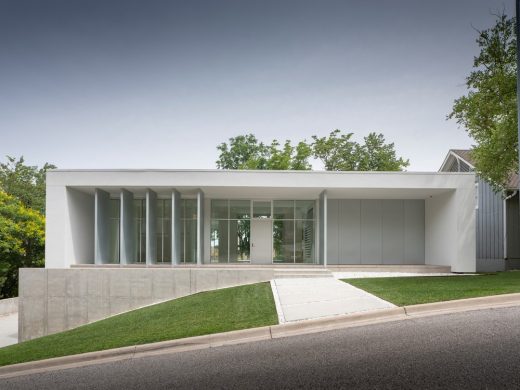
photo : Bob Greenspan Photography
Sunset Residence, Kansas City
Willoughby Design Offices, Kansas City
Architects: KEM STUDIO
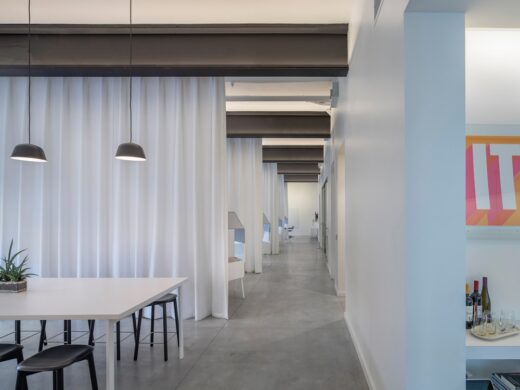
photo : Bob Greenspan Photography
Willoughby Design Offices
Museum at the Gateway Arch, St. Louis
Design: James Carpenter Design Associates
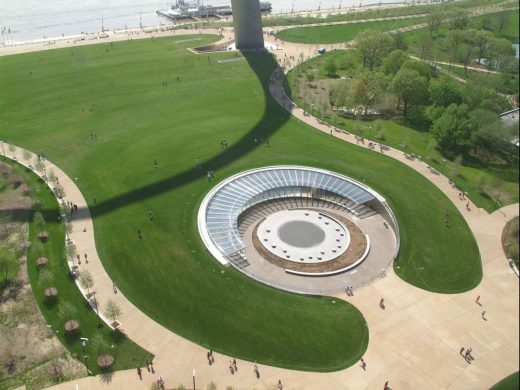
photo © Earthcam/Gateway Arch Park Foundation
Museum at the Gateway Arch in St. Louis
Gary M. Sumers Recreation Center at Washington University in St. Louis
Design: Bohlin Cywinski Jackson architects
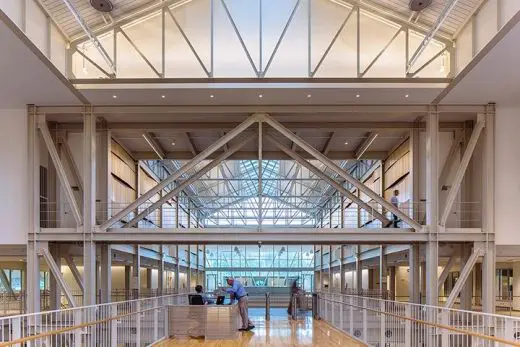
photo : Daniel Lee/Bohlin Cywinski Jackson
Gary M. Sumers Recreation Center at Washington University in St. Louis
Green Air installation at Contemporary Art Museum of Saint Louis
Design: Nomad Studio, landscape architecture
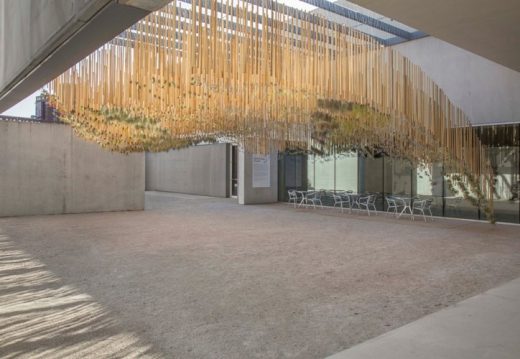
photograph : Alise O’Brien Photography
Green Air, Contemporary Art Museum of Saint Louis
Nelson Atkins Museum of Art – Extension, Kansas
Design: Steven Holl Architects
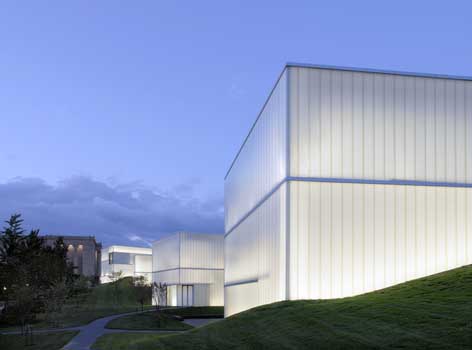
photo : Andy Ryan
Nelson Atkins Museum of Art building
Website: Kansas City
Comments / photos for the Kansas City International Airport, Missouri, USA building design by Skidmore, Owings & Merrill (SOM) page welcome

